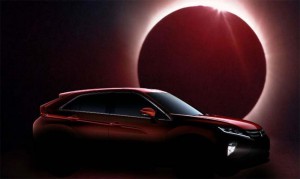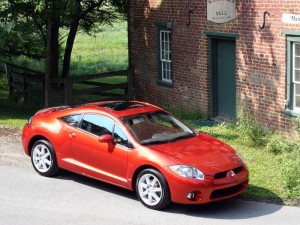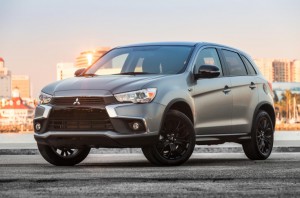
Mitsubishi is looking to take advantage of the popularity of crossovers with the new Eclipse, which is now called the Eclipse Cross.
After a five-year absence, the Mitsubishi Eclipse is set to make its return – or more precisely, what Mitsubishi will now call the Mitsubishi Eclipse Cross.
And as that slight name change might suggest, the vehicle making its debut at the upcoming Geneva Motor Show will take the form of a compact crossover-utility vehicle, rather than the sporty coupe that was pulled from the market at the end of the 2012 model-year.
“The Eclipse Cross’s beautiful, dynamic form serves to bring about the same sense of excitement and inspiration as the diamond ring seen immediately before and after a total solar eclipse does,” the maker said, in a florid release teasing next month’s Geneva debut.
The planned introduction marks the latest step in the transformation underway at Mitsubishi, the long-troubled Japanese maker, as it moves from conventional passenger cars to utility vehicles. Its most popular models today are variations of the long-running Outlander line.

Mitsubishi missed the mark when it launched the latest-generation Eclipse, which eventually was pulled from the line-up in 2012.
(Mitsubishi took the covers off Outlander Sport in Chicago. Click Here for the story.)
The automaker has also made a heavy push into electrification, so there would be little surprise if it planned to bring out a hybrid or even a plug-in version of the new Eclipse Cross.
A rendering of the new crossover is meant to justify the revival of the Eclipse badge, Mitsubishi pointing to the new model’s sports coupe-like lines.
The Eclipse nameplate first appeared in 1989. The original model built a reputation as an affordable, sporty entry. It anchored what was, for a few years, one of the fastest growing Japanese brands in the U.S. market. But the fate of the Eclipse mirrored that of Mitsubishi itself.
(Mitsubishi remaining separate from Nissan. Click Here for the story.)
The fourth-generation model, launched during the 2006 model-year underwent a dramatic – but poorly reviewed – makeover. Critics faulted its awkward lines, and its excess mass and poor performance left potential buyers underwhelmed. It was pulled from the market in 2012, Mitsubishi having built just over 900,000 of the sports coupes over its lifecycle.
During much of its run, the Eclipse, as well as the convertible variant known as the Spyder, were built at a plant in Normal, Illinois, a facility originally launched as a joint venture between Mitsubishi and Chrysler. After the Detroit maker pulled out, Mitsubishi continued operating the factory, adding production of the Endeavor before shutting the plant entirely in 2016.
The fate of the Outlander has mirrored the automaker’s broader problems. It was saved from collapse a decade back by a consortium of Japanese banks. But it ran into a new series of problems last year when it was revealed Mitsubishi had long faked the fuel economy of its Japanese minicars. Heading for another collapse, Nissan stepped in and took control.
(Mitsubishi hints at high-end plug-in hybrid with Ground Tourer Concept. Click Here to check it out.)
Nissan has said it will let Mitsubishi operate as a largely independent entity, though the two companies are expected to expand platform and parts sharing. We should learn, in Geneva, just how much of the new Eclipse is coming from the Nissan parts bin.

